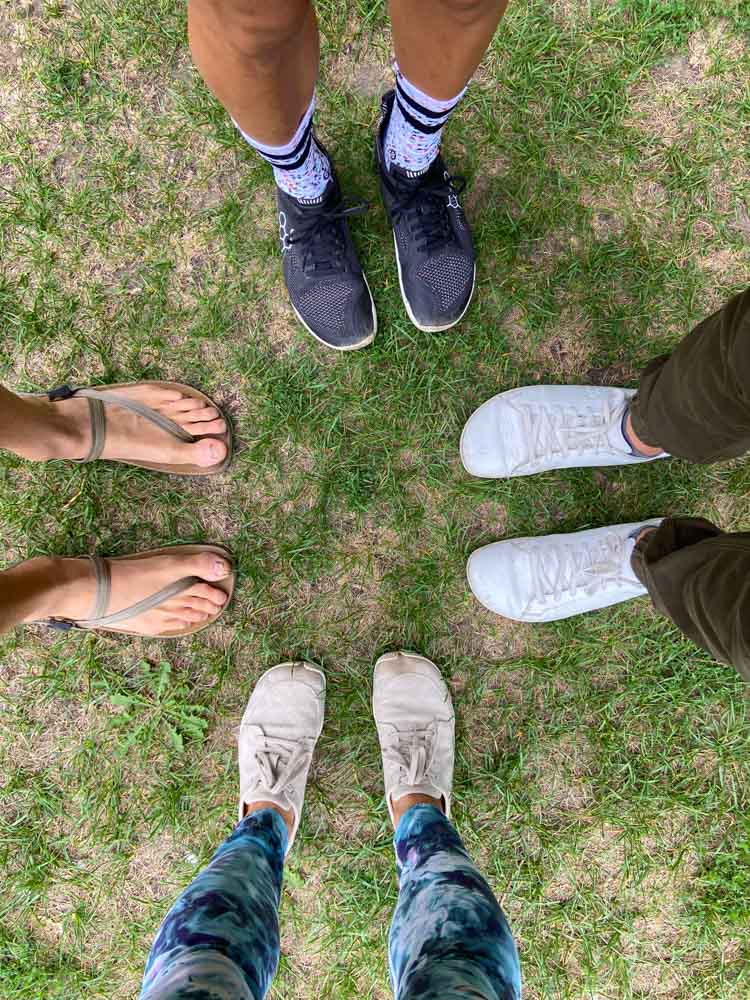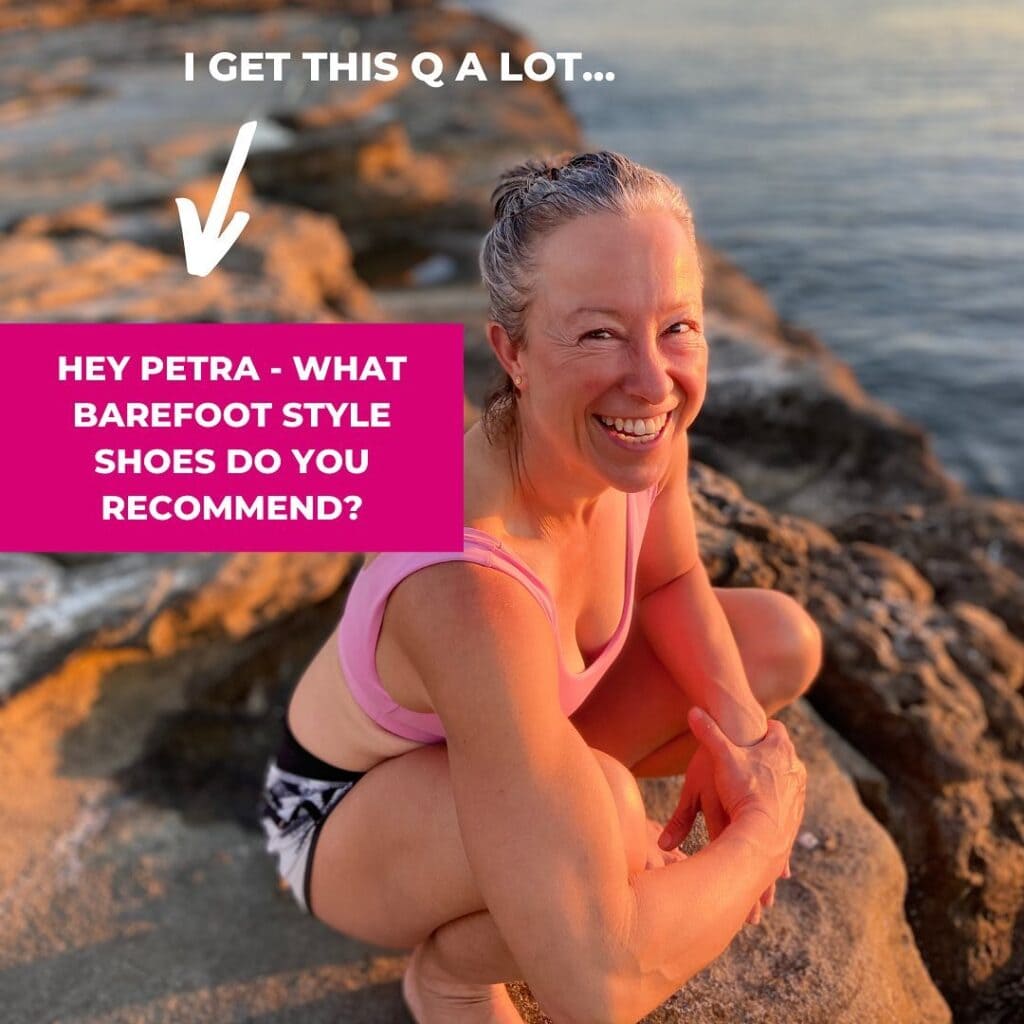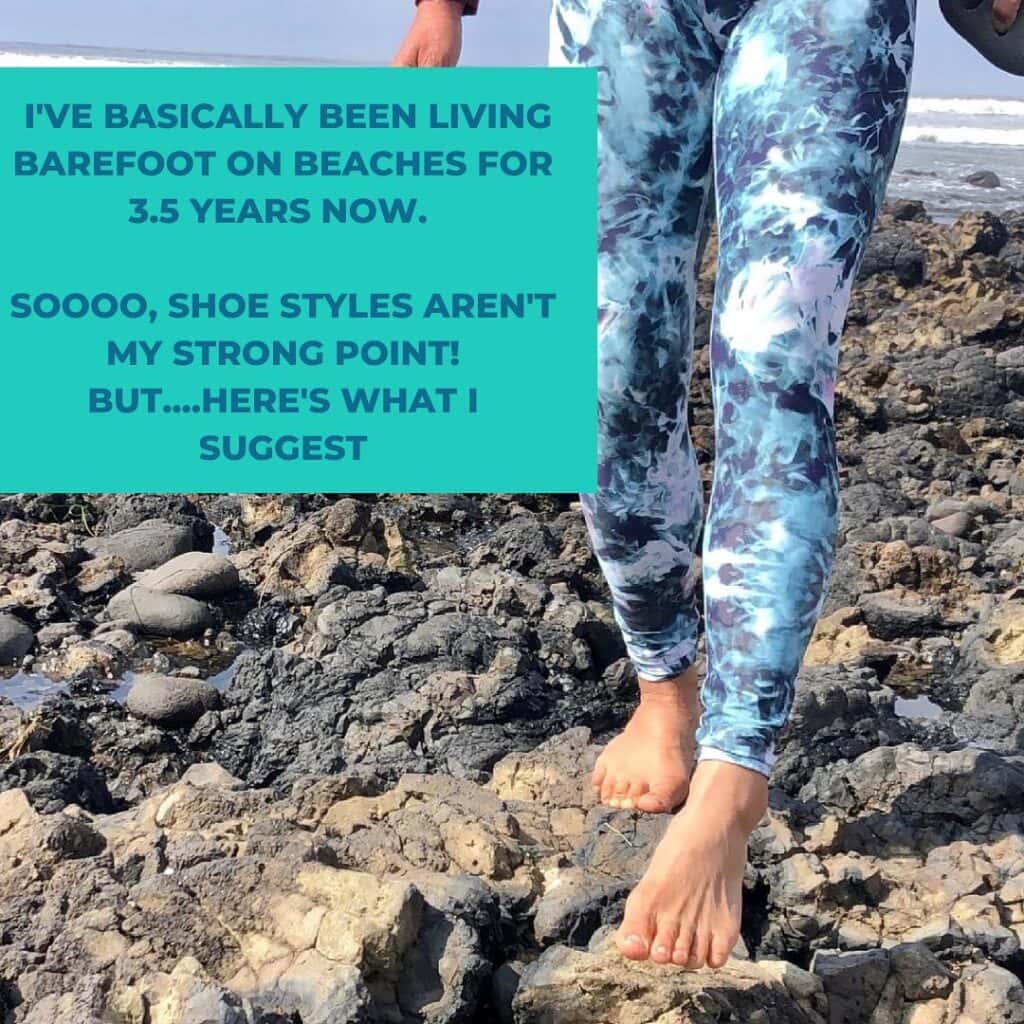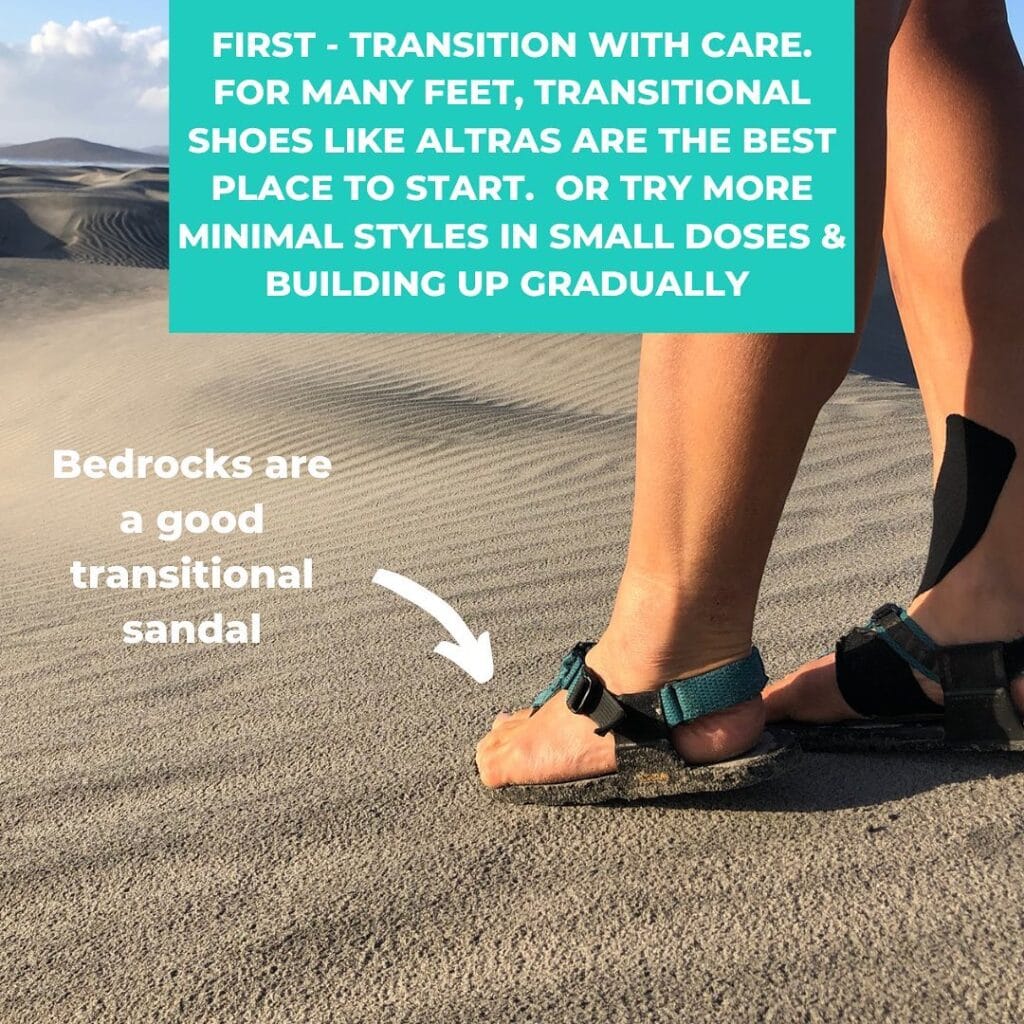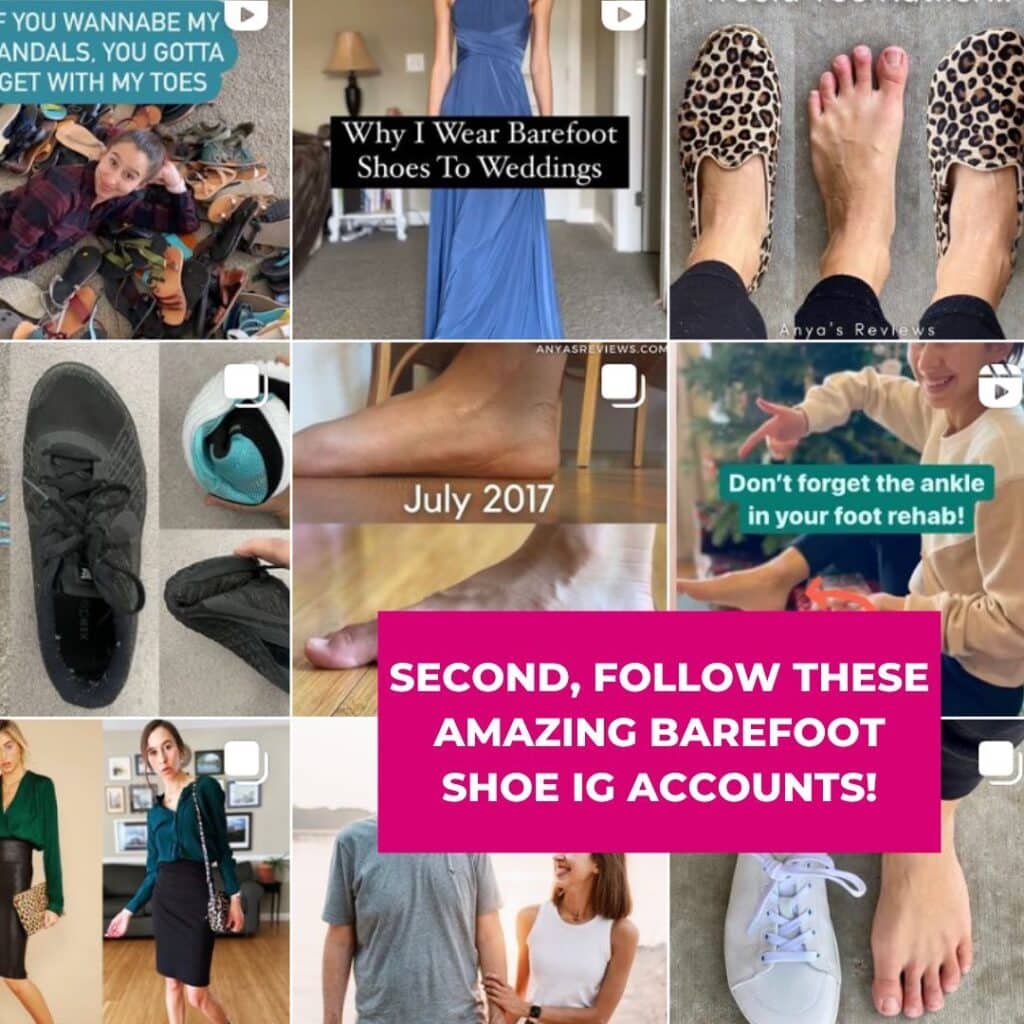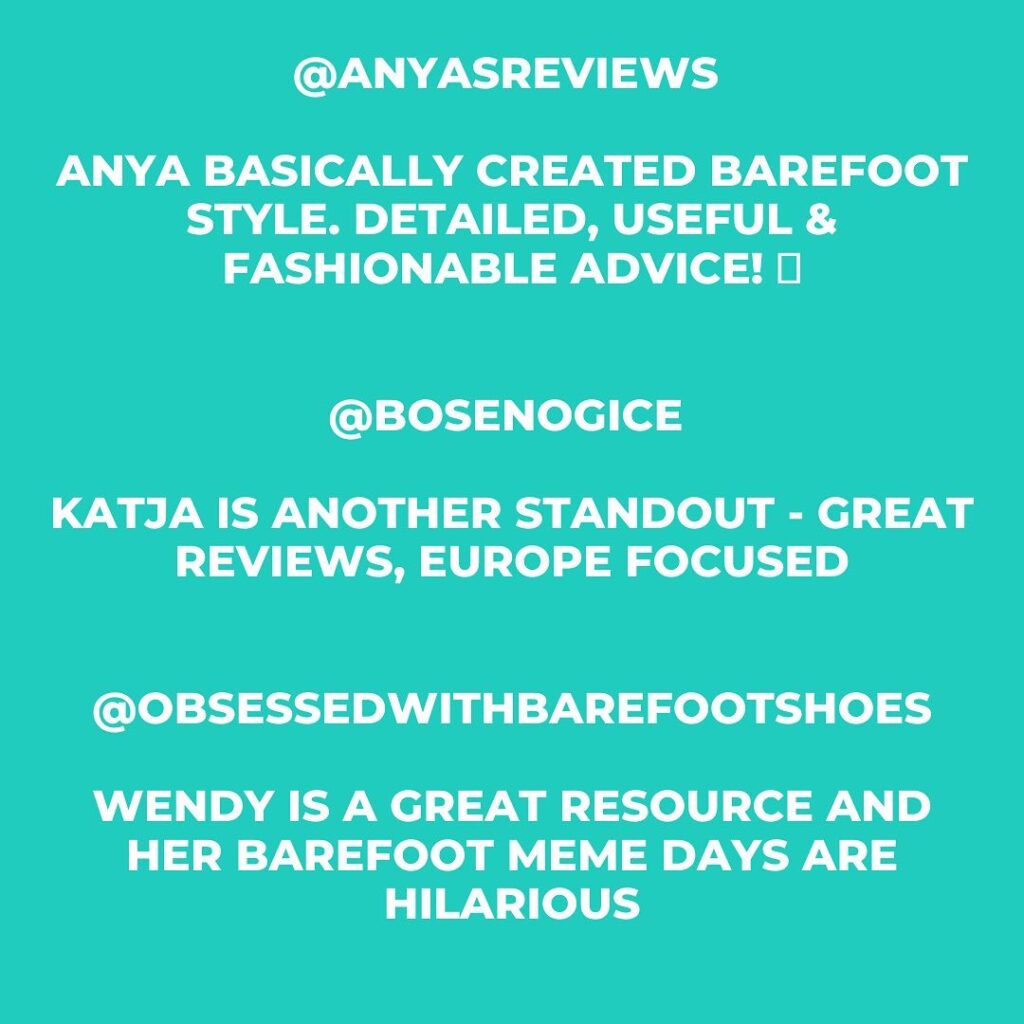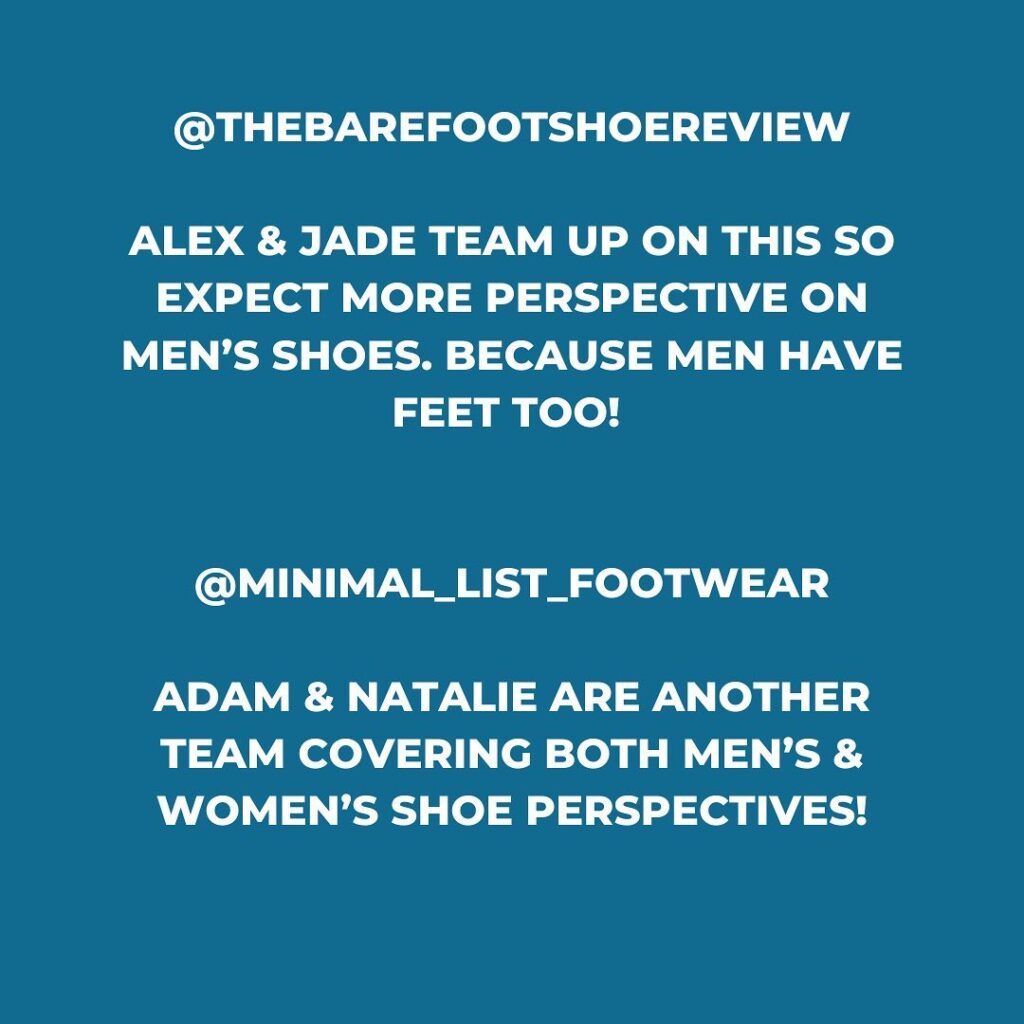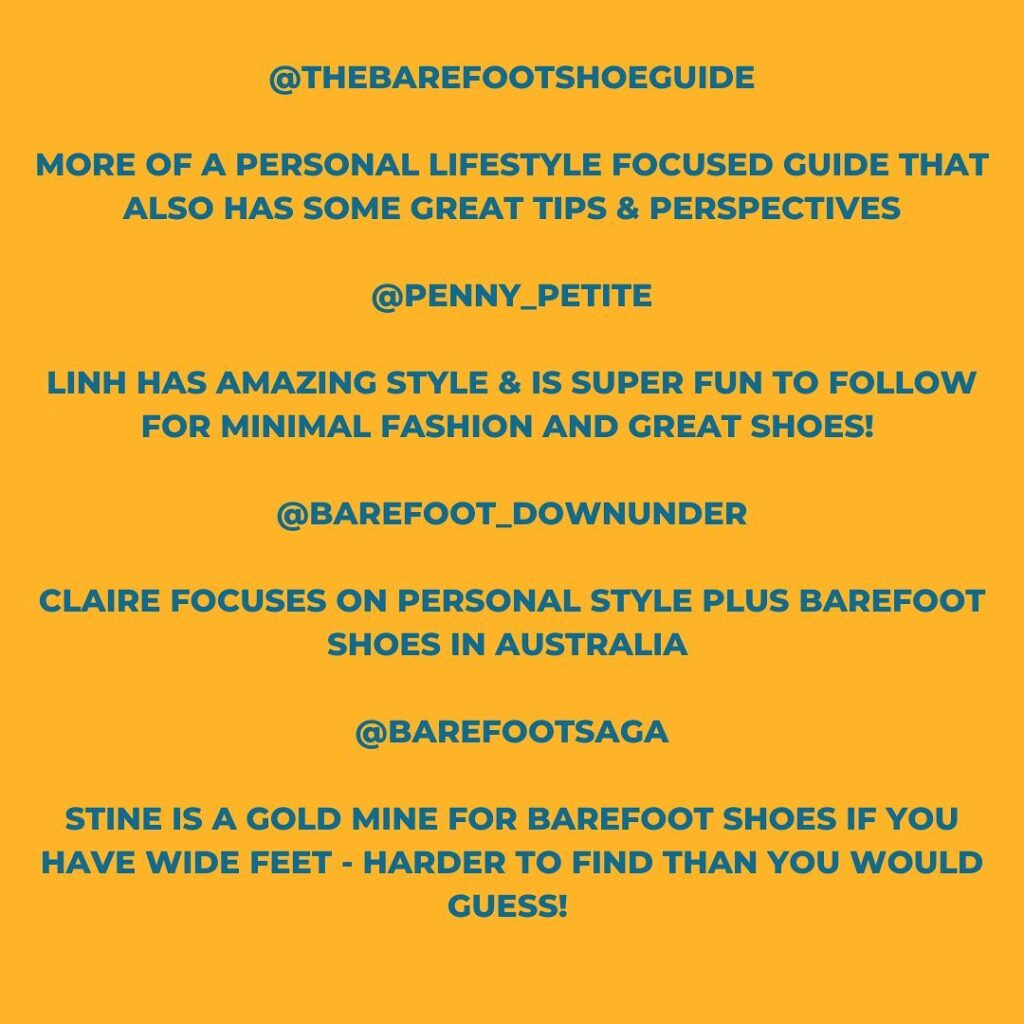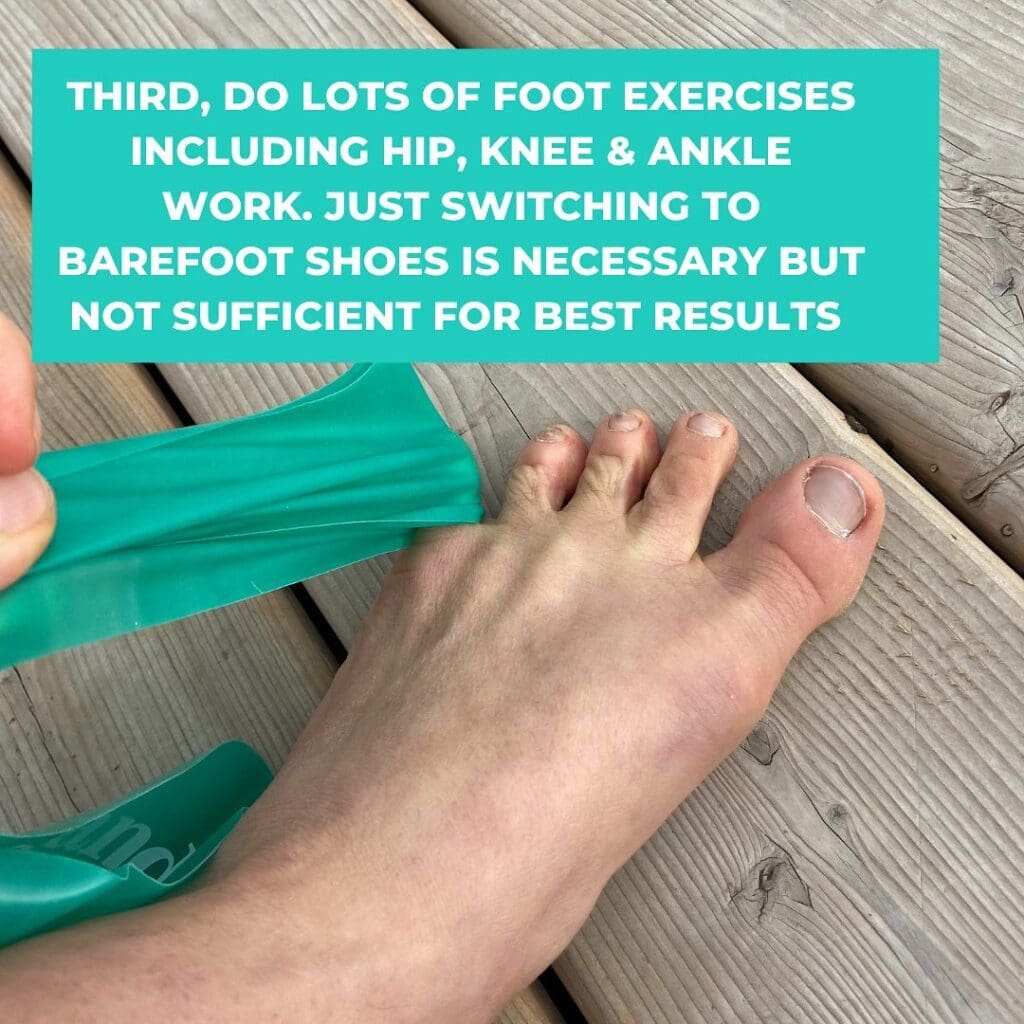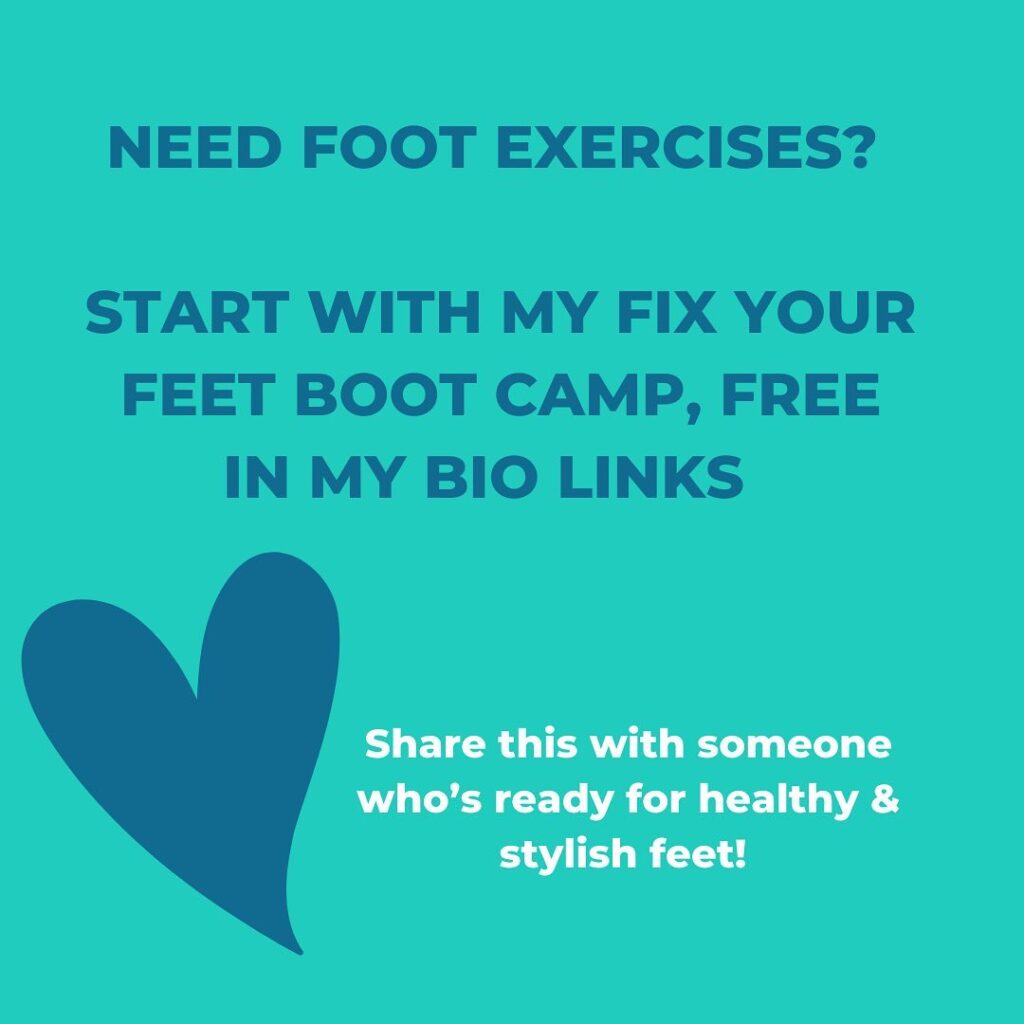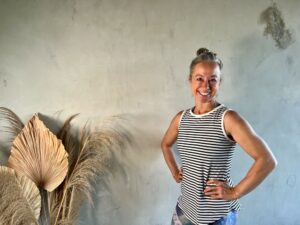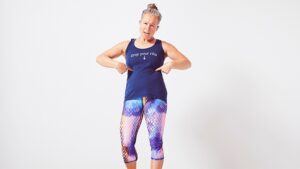Here’s the thing: if you want a body that feels great and works at its best, you’re going to need to think about your shoes.
It’s surprising to most people to learn that most conventional footwear is really terrible for our feet. Wearing the shoes we think are totally normal actually creates weak, stiff and unfunctional feet – which often leads to foot problems as we age.
In fact, one study found that 87% of adults over the age of 80 have at least one foot issue that can be traced to our footwear choices.*
The worst part? Foot problems rarely stay at our feet.
Feet that don’t work well can be a major reason for pain in our knees, hips, pelvic floor, spine, neck & shoulders.
But there’s also good news – most of us can make our feet stronger and healthier by switching to different shoes.
Barefoot style or minimal footwear is designed to allow our feet to function the way nature designed them.
In fact, simply switching to barefoot style footwear has been shown to strengthen feet as much as a foot exercise program!
Yes, even people with foot pain right now or who have been told they need orthotics can get great results from switching to barefoot style shoes!
However, when our feet have spent their lives in conventional footwear, switching to barefoot shoes can be a bit of a shock.
Kinda like if you never go to the gym and one day you decide to get out there and bench press 300 lbs. It might not end well.
I get a TON of questions about how to transition safely, so I’ve put together this guide to help you feel confident making a safe & healthy transition to barefoot style shoes!
(And for even more tips & resources to help you transition, make sure to check out the Find Your Footing Workshop I did with Anya from Anya’s Reviews.)
What Are Minimal Style Shoes?
Let’s start with a quick overview of what ‘minimal’ or ‘barefoot style’ shoe actually means. There are 5 main factors that make a foot friendly shoe. All of these will allow your feet to function more naturally and build strength & mobility.
👟 Zero drop – there’s no lift in the heel. Lifted heels overload our forefeet and cause wonky compensations in our entire bodies.
👟 Wide toe box – human feet should be widest at the toes, so we need shoes that allow our toes to spread. This is essential to having functional arches because of how our foot muscles are set up.
👟 Thin, flexible soles – these allow our feet to feel the ground (ground sensation helps our brains know how to walk better), build strength & mobility and to push off from bent toes (essential for correct walking).
👟 No toe spring – conventional shoes are lifted at the front to prevent us tripping – but this ends up causing our feet to get imbalanced.
👟 Fully attached to our feet – shoes that aren’t attached make our toes grip in an unnatural and unfunctional way, contributing to long term problems.
These are the basic things to look for, but there’s a lot of variation between different minimal shoes as well. In fact, there’s a whole category of footwear called ‘transitional shoes’ that can be helpful when you’re starting your transition or if you currently have foot pain.
What Are Transitional Shoes?
Some shoes combine ‘barefoot style’ features with others that are more like the conventional shoes your feet are used to.
These ‘transitional’ shoes can be especially helpful for people who currently have a painful foot issue.
Typically transitional shoes have a thicker, more cushioned sole than a true barefoot style shoe. This makes them more comfortable and protective than a typical barefoot style sole. They may also have some heel rise.
This can be really helpful if you’re very adapted to shoes with raised heels so you don’t overload your Achilles tendons during your transition.
I personally found that I liked having both very minimal shoes and thicker, more transitional shoes during my transition, so that I had options depending on how my feet felt and my plans for the day.
I’m not a shoe reviewer, but for quick reference, the top transitional brands are Altra, Topo and Lems for shoes, and Bedrock & Lunas for sandals. Using Northsoles insoles can be a middle ground.
Why You Need To Plan Your Transition Carefully
Although barefoot style foot wear can be much healthier for our feet in the long run, it’s not always easy to transition.
Injuries can happen to any part of our body that’s overloaded, and changing our footwear can create an overload if we get too enthusiastic! And if you’re already in pain or have foot issues, it can be intimidating.
But, if you do it right, I predict you’ll be incredibly happy that you’ve switched to barefoot shoes! You’ll have less foot pain, less body pain, and you’ll get to enjoy feet that actually feel amazing (as well as letting you do all the things you love).
How To Plan Your Transition
How you transition should depend on the four factors:
1) The current state of your feet (e.g. are they pain free, strong, stiff, weak, painful, diabetic?)
2) The type of footwear you’re used to wearing (including orthotics),
3) How you’ll be loading your feet (e.g. light walking, lots of walking, walking on pavement, hiking on challenging natural surfaces, running, etc.), and
4) Realistically, how much you’ll support your transition with exercise.
For a healthy person who’s not currently in pain and who doesn’t run or do a lot of heavy walking, expect to take about 8 weeks to switch . If your feet & body are currently in pain, expect to go slower – it could take a year or three.
Btw – this is a pretty comprehensive blog post but if you want more resources and exercises to help you tailor your transition to your unique needs, I’m here to help! This workshop I taught with Anya from Anya’s Reviews has everything you need to make a healthy transition and pick the perfect shoes for your body!
Transition Options
You can transition in three basic ways:
1) Go straight to very minimal shoes, but moderate the amount of time you wear them. Build up gradually.
2) Choose transitional shoes that are similar to your current footwear. Over time, gradually increase the ‘barefootness’ of your shoe choices.
3) Try a hybrid approach – start with both a very barefoot option and a transitional option, and switch back and forth it feels right for you.
I’m a big fan of the third option – mostly because I don’t believe you’re going to want to wear your conventional, toe squashing shoes again once you get your feet in barefoot style shoes. All transitions are unique, but here are some guidelines that should work well for most people!
How To Transition To Very Minimal Shoes By Moderating Time
Best for: People without existing foot pain who are good at listening to their body
Expect to take at least 8 weeks for your transition but give yourself more time if it feels better for your body.
Start for the first week wearing your minimal shoes for one hour per day of normal movement.
Then add an hour every week until you’re wearing your minimal shoes all day every day. Back off if your feet start to hurt or feel very tired at any point in this transition.
Go back to your other shoes for a few days or walk less, or a bit of both.
And be smart about it! If your ‘one hour a day’ was sitting at your desk, then your ’two hours a day’ shouldn’t mean a two hour hike barefoot on gravel!!
For best results, support your transition with foot exercises to improve how your feet and body function.
Toe spreaders like CorrectToes will be great for you as well!
Once you’ve transitioned, it’s a great idea to start adding time totally barefoot, walking on different surfaces to continue improving your foot mobility & strength!
How To Transition Using Transitional Shoes
Best for: People who currently have foot pain, people who don’t want to do foot exercises, people currently using orthotics
Choose a pair of transitional shoes with soles that are about as thick as your current footwear, and start wearing them.
(If you use orthotics, use them in your transitional shoes for now).
You can take a few weeks to ease into the transition by gradually increasing your time in your new shoes – play it by ear according to how your feet are feeling.
Make sure to work on foot exercises so you can strengthen your feet as they adapt to your new foot wear! This is a key step to prepare for wearing more minimal shoes later.
Wearing toe spreaders can also be really helpful for you because they help build really functional muscles in your feet and help restore circulation & alignment (which can help decrease pain). I recommend CorrectToes because you can wear them in your shoes for more strengthening and muscle development.
If your feet respond by feeling better, then get a more minimal pair of shoes and start wearing them for a short amount of time daily.
Increase this gradually – take at least 8 weeks.
If you experience more pain, back off, add more exercises, and consider getting personalised advice.
And remember – it’s perfectly ok to decide to never transition to a more minimal shoe – a transitional shoe is still going to give you huge benefits and this is really all about helping YOUR body feel its best! Transitioning is unique to every person and usually involves some careful experimentation.
But if you do decide to go more minimal, follow the 8 week guidelines above for your new shoes, or time without your orthotics. Adjust the timelines as you need to!
Allow your body to be your guide and don’t push through increased pain, it’s a sign that things aren’t working! But, don’t be scared to experiment with care and kindness.
How To Do A Hybrid Transition With Both Minimal And Transitional Shoes
Best for: People who want more foot-friendly options during their transition, works well with or without existing foot pain. Also anyone who has to manage high mileage, such as dog walkers. Or everyone.
I think this is the best way for most people to transition, because this way you get the most foot-friendly options! Options are fantastic!
It’s pretty straightforward – just get yourself one pair of transitional shoes and one pair that’s more minimal.
On day one, try your transitional shoes for an hour. If that feels good, go two hours the next day, and build from there for a week or two. Take longer if your feet prefer! This is a key time to do foot exercises which will help strengthen and mobilise your feet to get ready for more minimal shoes. My Free Your Feet program is designed to help with this!
Once your feet are happy in your transition shoes, now start transitioning to your more minimal shoes. This time, plan about 8 weeks, adding an hour or so each week. And use your transitional shoes as your alternative instead of your conventional shoes.
But, How Do You Know When You’re Ready To Wear A Very Minimal Shoe Safely?
Honestly, there’s no single answer here. All bodies are different.
If you’ve made a careful transition and aren’t in pain, then try it, but remember that when you want to do a bigger-than-usual day, bring a less intense pair of shoes!
If you’re not sure, err on the side of caution. And don’t panic if you have a big day and your feet get sore. Just take a rest day and moderate your loads a bit the next time!
Spending lots of time at home barefoot before you go for super minimal shoes will be a great idea too!
What If I Have Plantar Fasciiitis/A Neuroma/Have Been Wearing Orthotics For Years/Have Dropped Arches/Etc.?
Transitioning to barefoot-style shoes is exactly what will be most likely to help your feet heal!
Movement itself is healing for our bodies. And minimal footwear helps you restore movement, strength, function & alignment to your feet – which is exactly what heals these particular foot conditions.
However, you may need to plan a longer transition (definitely using transitional shoes), add more exercises, and explore options like toe spreaders and metatarsal pads to support your journey. You may also want to consider 1-1 coaching or getting medical advice from a natural foot care professional.
My Move Better, Live Better Facebook group is a great place to ask for advice & troubleshoot questions like this so head over and hit me up if you’re not sure!
Three Keys To Get The Most Out Of Your Transition
A. Listen to your body!
It’s really important to listen to your body as you transition. Don’t ignore pain, stiffness or soreness – these are often signals you’re taking it too fast for your body right now. Take a few days in squishier shoes, walk a bit less, or do more exercises – all of these are great options to explore.
B. Avoid making sudden, big increases to your movement patterns
It’s surprisingly easy to overload your feet without realising it (until it’s too late).
Just because you’ve successfully transitioned to your normal daily activities does NOT mean your feet are now bulletproof. Big increases in loads can damage any feet!
This includes longer-than-usual walks (especially on pavement or heavily textured natural surfaces), changing the texture you walk on (e.g. rocky hikes or long sandy beach walks), starting an intense new exercise program, or even switching to a standing desk.
In fact, this is how I hurt my right foot during my transition. I was already wearing barefoot shoes full time (about six months in). But it was the winter in Canada, so I wasn’t walking much. And then I went on holiday to Mexico and insisted on walking barefoot on beach rocks. I triggered an injury that’s still with me, many years later.
So, take it easy on new & challenging surfaces at first. Give yourself time to adapt, and use alternative shoes as needed!
C. Add foot exercises and foot related exercises
Simply switching barefoot style shoes will absolutely strengthen your feet. For instance, my boyfriend transitioned without doing foot exercises 8 years ago and his feet have always felt great!
On the other hand, his toes are stiff and he doesn’t have great big toe alignment.
Is that an issue for him? Only time will tell.
However, my firm opinion is that doing foot exercises as you transition will help you restore better strength, alignment and function faster and for the long-term.
In fact, it’s not uncommon for me to hear from people who suddenly developed foot pain several years into their transition and who can’t figure out why.
I believe it’s because those are the people who would have benefitted from more foot work earlier in their journey.
Especially if you have an existing foot issue like plantar fasciitis or bunions, foot exercises will help you heal faster and get back to doing what you love soon! And you’ll do even better if you consider exercises that help the body systems that are connected to your feet.
For example, tight calves and hamstrings (often caused by wearing shoes with heels) can negatively impact your walking patterns. This can mean long-term neck & back pain that may not be changed simply by switching to barefoot style shoes. When I teach foot exercises (such as in my juicy Free Your Feet bootcamp), I always include whole body work and walking skills for this reason.
Transition Guidelines Recap
To recap, my recommendation for most people is the following:
👟 To start, buy at least one pair of thicker soled shoes that also has zero drop (or a small drop) and a wide toe box. Altras, LEMs, Earth Runners, Bedrock Sandals, Lunas, or Topos are all excellent options.
👟 When you feel ready to try a thinner soled shoe, start by wearing it only a short time every day and increase the time gradually.
👟 An alternative approach is to buy a more minimal shoe and use an insole when you want more cushion. North Soles insoles are designed specifically for minimal shoes and many of my students have said they like them.
👟 If you do a lot of pavement walking you may be happier using a thicker sole for a long time – many people find pavement particularly hard on their feet.
👟 If you experience foot pain that you think is the result of overloading, simply back off, spend extra time exercising and less time walking, and use a more cushioned shoe for a while before continuing.
👟 I recommend using CorrectToes toe spacers if possible because they’ll help your feet have a functional arch as you walk, right from the start! As with your shoes, give yourself time to adapt to your toe spacers.
👟 Spend some time every day barefoot and ideally walking on texture since this will strengthen and mobilise your feet to support your transition (if you have plantar fasciitis, wait until you’re no longer in pain before spending a lot of time barefoot and definitely listen to your body!).
👟 Do foot exercises regularly! You’ll build strength faster, heal issues faster, and be less likely to experience foot pain down the road after you’ve transitioned!
Pro tip: I often carry around a spare pair of shoes so I have an option if my feet don’t love what I’m doing to them that day. Need some foot exercises to support your transition? The exercises I chose for my (free) Free Your Feet program will help you restore your natural foot function faster and experience better results in the long term! Click here to start.
How Runners Should Transition Their Shoes
For runners, consider transitioning your running straight into a very minimal shoe, but cut down a LOT on your running time.
That’s because transitional shoes typically have a lot of cushion. And the cushion forces you to heel strike as you run. It’s the heel strike that seems to be the cause of most running injuries. So some experts say it’s better to forego the cushion completely, start really minimal, and then take as long as you need to slowly rebuild your time.
You may naturally transition to a different technique, or you may want to learn a new running technique so you can repattern your landings.
I know it sucks to cut down on your running when you switch.
But the result for many is fewer injuries and even faster running times, so many people feel the trade off is worth it! I’m not a running coach, but you can check out the excellent book, Older Yet Faster, for guidelines that will help you run better in minimal shoes. Dr. Irene Davis is a PT and researcher who runs a clinic at Harvard, and she offers some great tips & information in this podcast interview with Dr. Peter Attia.
You can also consider starting by transitioning to barefoot style shoes for walking and daily life to get stronger feet before you start your running transition.
Who Should Not Switch To Minimal Footwear?
There are some people who may not benefit from a switch to minimal footwear. If you have one of the following conditions, barefoot may not be ideal for your body:
Hallux Rigidus (Big toes that don’t bend back)
If you have rigid big toe joints, minimal style footwear will force you to change your walking gait by doing some sort of rotational movement compensation. This can be really problematic for your body, so for you, it’s better to choose footwear that has some minimal characteristics but has a thick sole and a toe spring. Shoes like the recommendations below (from Gait Happens) will be a great middle ground for you!
Running Shoe: Topo Phantom, Hoka One One Bondi, Altra Paradigm
Work Shoe: Alegria
Sandal: Birkenstock
Neuropathy
If you can’t feel what you’re stepping on, minimal footwear or barefoot time can be unsafe. Consult with a podiatrist for footwear suggestions – the Healthy Feet Alliance has a directory of naturally focused foot experts who can help you find a great option.
Hypermobility
Some very hypermobile people may do better with supportive orthotics. However, many hypermobile folks will actually benefit more from a transition to minimal shoes – but really depends on the person. In either case, hypermobile folks should plan to make their transition very slow, and support their feet with lots of strength focused exercises.
Tendon issues, fractures or other current injuries
If you’re having an acute issue in your feet right now, it would be wise to consult with a PT or other medical practitioner before making changes to your footwear. Issues such as Achilles/peroneal/post-tibial tendonitis, metatarsal stress fractures, or other severe injuries do best with careful rehabbing and specific 1-1 advice. Head to the Healthy Feet Alliance website to find a naturally focused clinician to support your healing.
How To Find The Right Barefoot Shoes For You
Now that you’re ready to transition, it’s time for the million dollar question: what shoes should you buy!?!?
The right answer is going to depend on your feet, your fashion sense, and how you plan your transition. This can be a real barrier, but fortunately there are a lot of great shoe review resources out there!
Here are some top options:
Bose Nogice – Located in Europe? Katja has you covered!
Find some of my other fave barefoot shoe finding resources right below!
Transitioning Tips From People Who’ve Been There!
Big shout out to my amazing FB community peeps who all shared these amazing tips!
1️⃣ Make sure you figure out your foot shape before you start buying! Here’s a blog post from Anya with all the details (and brand suggestions).
2️⃣ Do NOT buy a whole bunch of shoes right away. Your foot shape may change during your transition and many people regret having bought too many shoes too early.
3️⃣ Ask for help! The barefoot community is amazing! Reach out and ask people about their experiences and you’ll get a ton of great info & support! My Move Better Live Better group on FB is great for this, as is Anya’s Barefoot group.
4️⃣ Save money! Buy shoes on sale or second hand. Because barefoot shoes are expensive and sold mostly online, there’s a vibrant resale market. There are excellent regional B/S/T groups on Facebook, including for Canada, Europe, the UK, and Australia (and probably elsewhere).
5️⃣ Reminder: your feet may change with the seasons. After a winter of wearing boots and walking less, spring and summer can require you to re-adapt your feet. Consider having a more cushioned option around for times like this and get ready for spring by doing extra foot mobility exercises to prep. Watch out for winter holidays too!
6️⃣ Make sure to use sunblock on your feet if you’re going outside barefoot! A foot burn is no joke!
Next Steps
I’ve covered a TON in this post and I know you probably still have more questions. Here are the next steps you should take:
✅ Download my (free) Free Your Feet exercise program – it’s designed to help you address common chronic foot issues AND get ready for barefoot shoes.
✅ Want more exercises and transition advice? Try the Find Your Footing Workshop I did with Anya, from Anya’s Reviews, to get more practical tips & downloadable resources to support your journey!
✅ Take the plunge and buy your first pair of healthy, foot friendly minimalist shoes!
✅ Bookmark this post and check in whenever you need some support!
I’m soooooo excited to hear where your healthy foot journey takes you! Congratulations on making what might be one of the very best decisions you will ever make in your life!
Still have questions? Come ask me in my Move Better, Live Better Facebook group.

